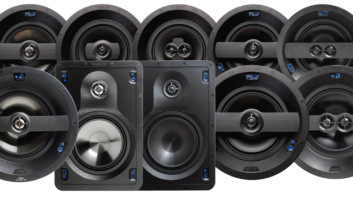I’m a very loyal person both personally and professionally. My friends have been friends forever, and I would do anything for them. When it comes to professional loyalty, I will support our manufacturing partners ’til the cows come home. So, for us to change product lines is a really big undertaking both because of our loyalty and also because when we do so, it means that we are moving in a different direction from the thousands of installs that we have out in the field.
Image: Thinkstock
When you have one control system, or networking product line, or media server that is in the majority of your clients’ homes, it makes it a big deal to change a product line because you will lose touch with the legacy product line, and it will become more difficult to support.
Over the past few months, we have begun to do just that: look for a new line of networking gear. So the fact that we are exploring new networking solutions is something we do not undertake lightly. We have been looking at the big players in the industry and have been testing out several different lines.
Critical to our decision are a few criteria:

1. Reliability: This is a no-brainer and a basic cost of entry;
2. Independence: We want to land on a decision where our networking partner is not beholden to another product line, be it a control system, media server, or other technology;
3. Ease of configuration/GUI: I want to be sure we implement a solution that can be configured by our more advanced techs in the field and won’t require my attention or senior-level networking support for basic installs;
4. Crestron Support: As dedicated Crestron dealers, we want to make sure Crestron’s TrueBlue Support is familiar with, and can assist us with, any product line we select.
Fortunately, network monitoring is not as critical a component for us. We use a combination of the MyCrestron service and BlueBolt to monitor and remotely service our client systems. For dealers not using these tools, there are plenty of third-party solutions including Domotz and ihiji to provide network monitoring, and there are captive solutions such as OvrC and OvrCPro from SnapAV and BakPak from Pakedge.
There are some great benefits to third-party networking monitoring (both independent and captive) that we are not taking advantage of but, may in the future. Features, such as the ability to connect directly to most networked devices, not just the control system, network, and power devices (i.e. ISP modems and networked AVRs); rebooting devices not plugged into IP power; and providing back-end client billing for establishing recurring monthly revenue streams can be benefits provided by some of the solutions not currently in our arsenal.
With all of that said, and taking into account the four criteria listed above, we are nearing our decision point and I’m feeling really good about the line we are leaning toward. Once we get there and are up and running with the new line, I’ll share my thoughts on the process in this space.
How do you handle switching product lines? What are the most critical criteria you look at for networking gear? Any thoughts or suggestions for our current exploration of the market?







